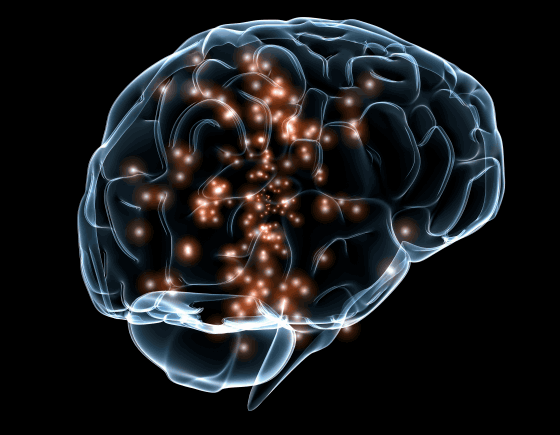DARPA launches "PTSD Implant Treatment Method" to Embed Minimal Tip in the Brain

National Defense Advanced Research Projects Bureau(DARPA), due to the very small chip embedded in the brainDeep brain stimulation therapyIn PTSD (Post traumatic stress disorder) Announced the start of a project to treat psychiatric disorders such as. There is a huge budget of 26 million dollars (about 2.6 billion yen) in five years.
2014/05/27 Journey of Discovery Starts towards Understanding and Treating Networks of the Brain
http://www.darpa.mil/NewsEvents/Releases/2014/05/27a.aspx
DARPA teams begin work on tiny brain implant to treat PTSD | The Verge
http://www.theverge.com/2014/5/28/5758018/darpa-teams-begin-work-on-tiny-brain-implant-to-treat-ptsd
The project that DARPA started is called "SUBNETS" and embeds a very small tip and electrode between the brain and the skull. Tips embedded throughout the brain can monitor the electrical signals in the brain and transmit data to promote the treatment of mental disorders like PTSD wirelessly. Electrodes can cause electrical impulses to alleviate symptoms.
DARPA elected two teams to take a different approach. One isUniversity of California, San Francisco(UCSF) team with the aim of developing an implant that focuses on parts of the brain involved in mental and neurological diseases. The nerve loses the functional unit by undergoing aging or disability, but it can compensate and recover by stimulation from the outside world. By directly recording, stimulating and treating brain activity by the implant, we can repair the neural circuit of the brain and free people from diseases such as PTSD. If the treatment is successful, the implant will eventually be removed from the brain.

ByBill Brooks
Panic disorder, obsessive-compulsive disorder, etc., do not treat different diagnostic names for each diagnosis, rather than focusing on the common factors in each disease treatment method "Trans-diagnosticWe call it another teamMassachusetts General Hospital(MGH) team conducted an approach in this way. Real time recording of intracerebral activity by implants and tracing signs of pathology up to a single neuron allows us to analyze elements such as anxiety neurosis, memory disorder and delayed response time common to psychiatry and neurological pathology We are planning to identify it.

The SUBNETS program is related to intra-brain mapping studies, which President Barack Obama announced in 2013, a budget of 100 million dollars (about 10 billion yen). If the SUBNETS program is successful, it seems to have a major impact on PTSD, which accounts for one-third of American nursing care expenses, and the treatment of millions of anxiety disorder patients.

Related Posts:
in Science, Posted by darkhorse_log







